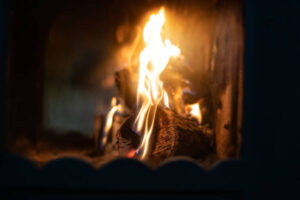The Electric Dance of Stoves and Fires: From Woodsmoke to Induction
When it’s cold outside, the sound of a stoves Northallerton crackling is strangely comforting. Even if producing fire has become a science over the years, the ballet between flames and stoves is still as interesting as ever. My grandfather used to say that his ancient wood stove could warm bones all the way down to the marrow. When you smell burning oak, you suddenly remember marshmallows and spooky stories spoken by shushing embers.
Turn the calendar over. A stove might illuminate with the stroke of a button today, barely making a sound. Choose between electric coils, glass tops, or magnetic inductions. Modern stoves include buttons and whistles, a lot of timers, and slick surfaces that are so polished you don’t want to touch them. Even with all the technology, there is still a kind of enchantment in watching a flame jump or a coil turn red with excitement.
Gas burners snarl and lick their blue tongues as they chew through old family recipes. Electric stoves, on the other hand, hum softly, and you can be sure that their heat will rise. There are people who swear by each method. Some people say that gas gives food a smokey flavor that you can’t get with any other kind of plug-in gadget. Some people say that the continuous glow of an electric light is nearly like math.
Of course, fire comes with trouble. Even the best cook can burn toast or have soup boil over while they watch their favorite show. Have you ever left a kettle on a wood stove? The loud whistle could wake the dead, and you can’t miss the terror when you trip over the dog while trying to keep your tea from boiling over.
Then there are camping vacations, which are the great equalizer of cooking skills. A well-built fire in the woods does more than just keep you warm. It’s a hands-on session for patience and strategy that is the main attraction. Green logs spit, wet leaves won’t catch, and the wind blows smoke right into your eyes. But when your marshmallow eventually rises golden and beautiful, it’s all worth it. You can’t buy a piece of primitive triumph at a store that sells home goods.
A stove is more than just a way to cook food, and fire is more than just a way to stay warm. Both of them form their keepers. The radiance brings everyone together, from weekend chefs to dirty toddlers to chilled cats to overbearing relatives. Sometimes that flame is real, and other times it’s the quiet hum of an induction cooktop. Either way, the story is written in soot and burn scars.
When people have strong opinions, they can get hotter than a cast iron pan left on the stove. Some cooks swear by cast iron, while others swear by nonstick. Firewood still divides easily into logs, just like it does into arguments. Purists shake their heads at computerized dials and preset temps, saying that only an open flame can do “real” cooking.
Living in the present, feeling at home in the past. The simple stove and the unpredictable fire will probably never make peace. Each one has its own idiosyncrasies, causes fights, and most importantly, brings us together. Take a moment the next time you mix soup or toast bread. The food isn’t the only thing that is warm. In every bubble, every hiss, and every delicate sigh of an ember.

